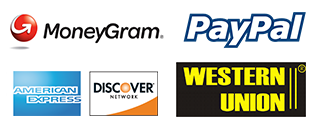Blog
A clothing label
is often the finishing touch to a designer's product. Clothing and accessory
designer/manufacturers have spent a lot of time and effort to make sure that
their products are top quality and the label is a reflection of the total
product. Designers want to make sure that their labels reflect the attention
that has gone into their new creation. Oftentimes, the care placed into
creating the garment is mirrored in the label. One of the first things that a
potential buyer looks at before purchasing an item is the label. Consumers read
the labels for many purposes, and the labels are often the "icing on the
cake" for their products.
When a consumer
buys a garment or an accessory, they are making an investment. They want to
keep their clothes in good shape. So they need to know exactly what types of
fabrics are in the garment and how to care for these fabrics. It can be
difficult to actually identify the materials in clothes at times. The care
needed for synthetic fabrics may be very different that the care needed for
cotton fabrics. Labels are the primary means of communicating this important
information. Washing instruction, types of fabrics, union affiliation - these
are all important factors when a customer decides to purchase an item. Labels
enable our manufacturers to communicate this information in their own special
style.
Labeling has
become so important in our culture that we now buy certain products just
because of the label. The labeling process has taken front and center stage in
American society! "Branding" is now an entire industry, and labels
are one of the basic branding tools. When purchasing garments, a customer may
look at the garment first, but she usually looks at the label second, to
determine the brand. It's important for the label to reflect the brand and the
quality that the customer is looking for. Branding typically includes a special
word, color, mark or symbol. It's important that this be consistent and easily
recognizable by the consumer. A label provides consistency within a brand that
might have a large variety of pieces and styles. Brands and labels are one of
the primary methods of distinguishing products in the marketplace.
Custom woven
labels and hangtags communicate the manufacturer's information. They help make
sure that accurate information gets to the consumers who purchase the products.
Beautiful woven labels are a classic addition to any garment. Creating woven
name/logo labels, care labels and tags, content labels and tags that describe
the products' ingredients, and size labels are imperative. Labels can also
include a combination of these things. Attractive and professional hangtags
with state-of-the-art production are also an important means of branding and
communication. They are a perfect finishing touch to any garment!
Labels come in a
variety of finishes and fabric choices: damask, semi-damask, satin, and
taffeta. Satin is the most popular choice, but not always the wisest. Satin is
thin and can snag easily, making it more likely to be cut out than other
labels. Though it looks very pretty originally, you need to keep the customer
in mind when choosing your label. Taffeta is stiffer than satin and can stand
up to a bit more snagging. However, Custom Satin
Clothing Labels provide the best finish with a smoothness that
reflects style and comfort, which can design the personalized company name and
logo.
Related reading: Woven Clothing Labels Polyester
Clothing Labels




 +86-592-3809808
+86-592-3809808 Sales@poptrims.com
Sales@poptrims.com




